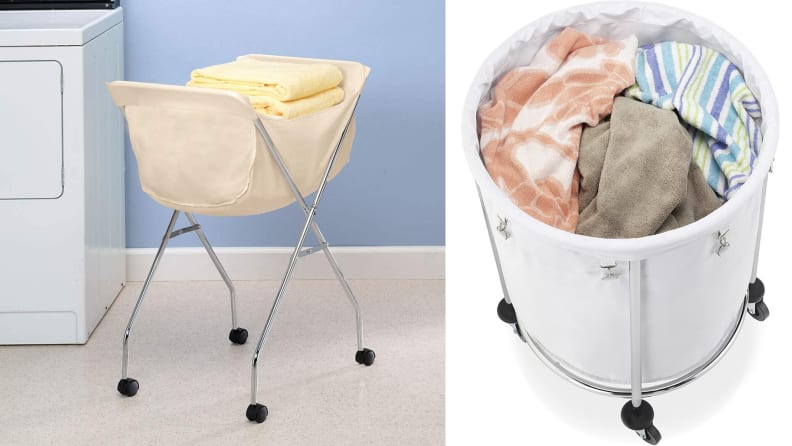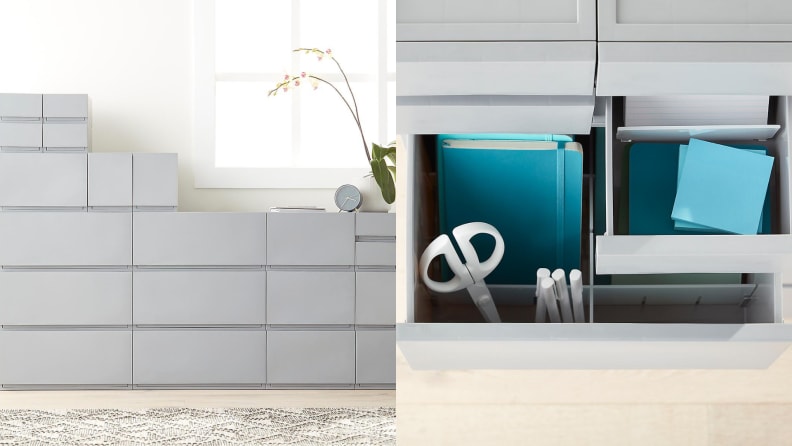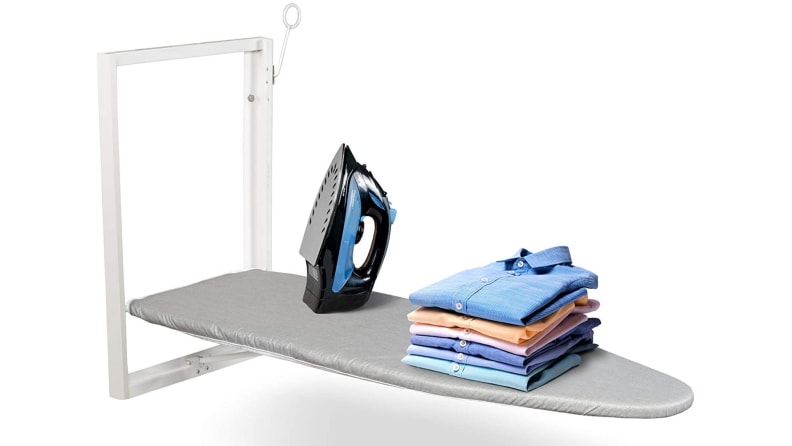6 ways to make doing laundry easier when you can’t bend, reach, or lift
You'll always have clothes to wash. Here's how to do it with ease.
Products are chosen independently by our editors. Purchases made through our links may earn us a commission.
As Boomers age, a growing number of them choose to age in place. Unfortunately, for many with increasing agility issues and physical limitations, the homes they’ve lived in for years may not be set up to support this choice.
Most homes require some form of remodeling, or at the very least a good reshuffle to accommodate the day-to-day activities of less agile people more safely. Laundry, for example, is a chore you’ll have no matter your birthday, but if you have any degree of difficulty bending, reaching, or lifting, this relatively easy task becomes exponentially more difficult.
The good news is that you can make doing laundry far easier with careful planning, thoughtful modifications, a few smart purchases, and clever upgrades. Here is where to start.
1. Move the laundry room to the main floor

No need to lift your laundry basket.
Laundry rooms are often an afterthought, but they should be moved to the priority list when it comes time to remodel for yourself or an aging loved one.
A full laundry basket makes it exponentially more difficult to negotiate stairs and narrow hallways, especially when you can’t see your feet. Not only that, but a full laundry basket can be heavy—too heavy to carry for someone with waning muscle strength. Dividing loads and adding extra trips to the plan is not a great solution when stair navigation is already iffy.
When planning a remodel, consider moving your laundry room to the main floor of the home, if your budget permits. Not only does one-floor living mean less frequent trips up and down stairs, it offers other accommodations like rolling hampers and laundry baskets on wheels that can be gently guided from one room to the next without having to lift it.
You’ll also want to make sure that your laundry room is accessible. Even if you’re not using a walker or wheelchair right now, there may come a time when you do need a mobility device.
2. Upgrade washers and dryers to a more senior-friendly design

The What to Wash / How to Wash helps take the guesswork out of laundry.
Front-loading washers and dryers are easier on your back and require less reaching movement, making them less of a challenge to load and unload. Moreover, front-loaders eliminate the need for you to bend and stretch into deep basins to retrieve the last pieces of load of laundry. Think about adding a pedestal to your front-loading machines to give them a little bit more of a height bump, or buying a washer and dryer pair that can be stacked.
Mark Brezinski, Reviewed’s senior staff writer for large appliances, recommends LG’s new WashTower. “The LG WashTower combines easy accessibility, simple controls, and great performance for a surprisingly good price,” he says. “Its front-facing design makes loading and unloading your laundry much easier and requires less stooping.”
Front-loaders are also ideal for seniors because they tend to have controls on the front of the machine. Look for clear, easy-to-read instructions and controls.
Reviewed’s Senior Manager of Lab Operations Jon Chan says, “Whirlpool’s ‘What to Wash, How to Wash’ control panel has the biggest print I’ve noticed on a washing machine.”
Not only does this further eliminate the need to stretch, reach, and see that far, the front-side controls can be wheelchair-friendly down the line.
Pro tip: Use colored stickers to identify washer and dryer settings if visual or memory impairment becomes an issue.
3. Give a care to flooring
In the laundry room, install non-slip flooring, as you would in most potentially wet areas in the home. Whether from dripping towels or the infrequent leak, slick floors lead to slips.
Furthermore, keep trip hazards at bay by removing loose rugs or taping them down to avoid accidental falls.
4. Install plenty of shelving and storage

Store your towels, linens, and toiletries in a storage unit.
Consider installing extra shelving in your laundry room, for storing towels, sheets, and laundry detergent at the best height for you. If square footage is at a premium, opt for pull-out shelving instead. Either one will pay dividends down the line.
The countertops that shelving affords is so important, too. Not only will you have a space for folding clothes comfortably without having to bend, but countertops also offer a place to rest a laundry basket as you fill, fold, and transfer.
5. From lights to ironing boards, accessorize with care

Just pull this ironing board out of the wall.
When revamping your laundry area, think like someone who has agility, strength, and aging challenges, even if you don’t already.
For example, traditional ironing boards are difficult to handle for anyone on a good day. For a senior, setting one up and taking it down can be considerably more difficult. To keep the frustration to a minimum (and your clothes wrinkle-free), install a pull-down ironing board that folds down from the wall or door and can be adjusted to the proper height for ease of use.
Brighter lighting is crucial for seniors, as visual acuity diminishes with age. Think about making accommodations for additional lighting in the laundry room, or, even, task lighting, if the laundry room area gets particularly dark.
6. When it comes to laundry detergent, less is more
Waist-high shelving for storing laundry detergent can make it infinitely easier to access for someone with diminished strength and dexterity issues. But, it’s also essential to consider the size of the laundry detergent containers you’re buying.
Every brand of laundry detergent and fabric softener comes in economy-sized containers, which give you more bang for your buck. They may be easy on your purse strings, but they can be a bear to lift and handle.
Consider buying detergent in smaller sizes as well as those that come with a pump dispenser.
The product experts at Reviewed have all your shopping needs covered. Follow Reviewed on Facebook, Twitter, and Instagram for the latest deals, product reviews, and more.
Prices were accurate at the time this article was published but may change over time.


